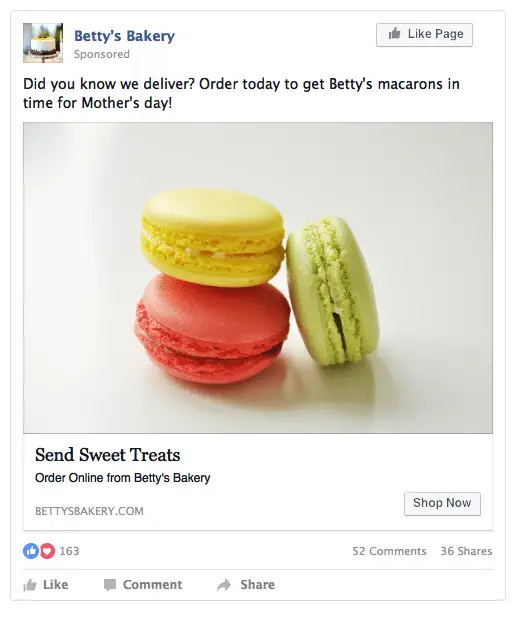
18 May Content Types and When to Use Them
When choosing what type of content to create, it is important to first determine what result is desired from the post. Objectives like driving sales on a website, introducing a brand, or encouraging interaction on a channel are common. Focusing on either active or passive engagements can help achieve the objective that was set. Active engagements are great for when the audience needs to be an advocate for the brand or accomplish a certain objective on the page, like click a link to a website or share the post with their friends. Passive engagements are more about raising awareness of the brand and its features, like viewing a video. With the post objective chosen first, determining what post type to use is pretty simple.
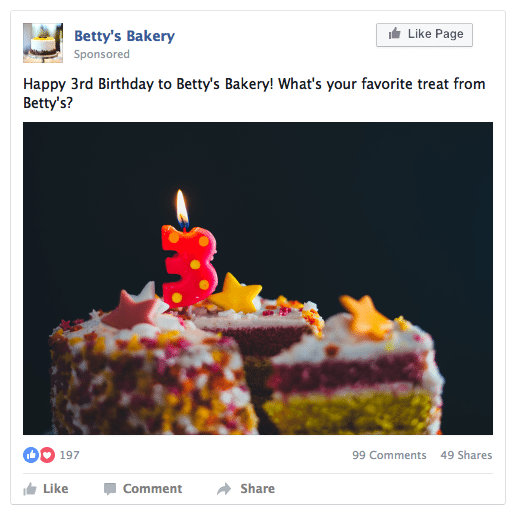
Photo Content
Photo content is fantastic for sharing company experiences, promoting events at the store or in the community, celebrating holidays, and more. If the objective of the post is gain engagement through comments, likes, and shares – photo content is a good choice. Photos are a great way to gain active engagements on your channel and often perform better than video and link posts in this regard.
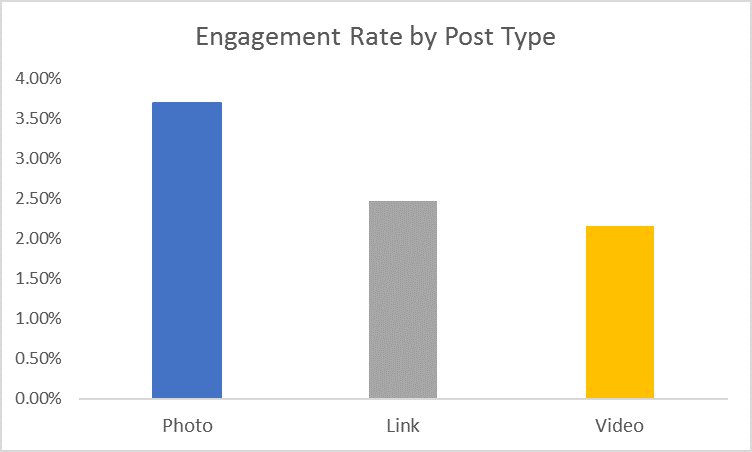
In a study performed by the Ignite analytics team analyzing over 18K Facebook posts from 30 brands, it was found that photo posts on average performed 49% higher than link posts and 71% higher than video posts in terms of engagement rate. Meaning, of the audience reached by the post, more of the audience actively engaged with photo posts than the other post types. Here’s a blog highlighting some other interesting findings from the study.
When measuring performance of a photo post, examine the engagement rate. The engagement rate and is calculated by dividing the number of engaged users by the reach of the post to show what percentage of those who saw the post engaged with it. This measure allows easy comparison between posts that may have differing audience reach.
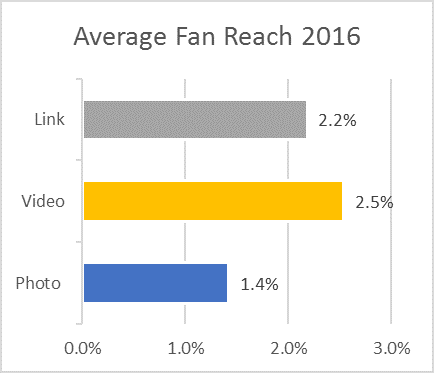
Video Content
When the objective is raising brand awareness, videos are the most efficient at reaching a vast audience and gaining passive engagements. In the Facebook data study, mentioned above, it was found that video content had greater fan reach than link and photo content. Increased reach allows a greater audience to see the post and become more familiar with the brand.
As video is not utilized for active engagement, like photos, measuring video success is best measured using view rate. View rate, like engagement rate, measures the percentage of audience that saw the video and took the time to watch it.
Video content has several versions that can be optimized for different purposes. Things like video length, links, and featured products can change the way the audience interacts with the post. <br
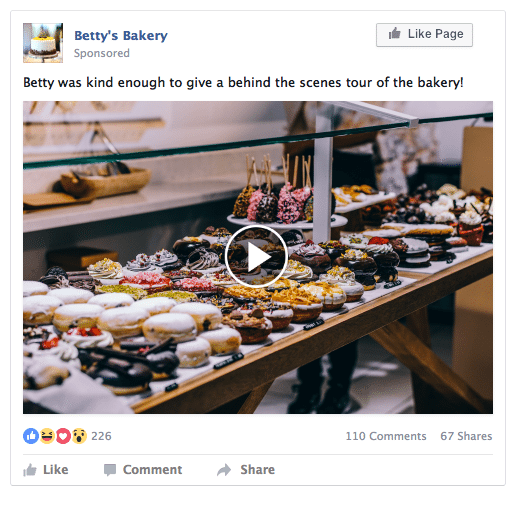
Short Videos and GIFs
Short videos and GIFs create interesting content that is visually engaging and can easily grab attention. Videos that are less than 15 seconds tend to be better for gaining passive engagement than active engagement. Passive engagement for a video is viewing that video, while active engagement would be commenting, liking and sharing.
Longer Videos
Videos that are longer than 15 seconds tend to gain better engagement rates and view rates than shorter videos. These videos still gain passive engagement, so utilizing them more for brand awareness is important. If the video is too long or does not contain useful content for the audience, retaining the attention of the audience for the whole video will be difficult. Often videos beyond one minute risk losing the audience due to their length. Additionally, Facebook announced in January that they were changing their algorithm to more heavily weight longer video posts. Read that full announcement here. To avoid any negative consequences of too long or too short videos, be sure to create the perfect ratio of length and content quality with videos.
Live Videos
Live videos are best to utilize when audience engagement is desired or there is an activity related to the brand to capture. Some brands use live videos to highlight fun events at their store, like crafts, community engagement projects, and demonstrations. Other brands use live videos to interact with their audience in real time, like a Q &A video where an expert answers customer questions live on the video.
Product Carousel Videos
Videos with a product carousel are relatively newer post options. Videos with the product carousel are optimal for driving sales of specific products that are featured in the video. For example, posting a makeup tutorial featuring the latest makeup line while promoting the products available for purchase in the carousel below. Alternatively, you can use the product carousel to also feature related products. For example, posting a video about hiking in the Smokey Mountains, you may want to feature camping/hiking gear in the product carousel below. Although the video does not directly mention those items, the audience watching a video with that content may be more likely to purchase those related products. These product carousel videos allow the customer to easily purchase items that they enjoy in the video without having to take the time to search through the website for that item – allowing potential drop off from frustration or disinterest.
When measuring performance of the product carousel videos, click through rate along with view rate will be essential to measuring success. Additionally, tracking the traffic and sales on the website that is being promoted will be important to judge if your objective was accomplished.
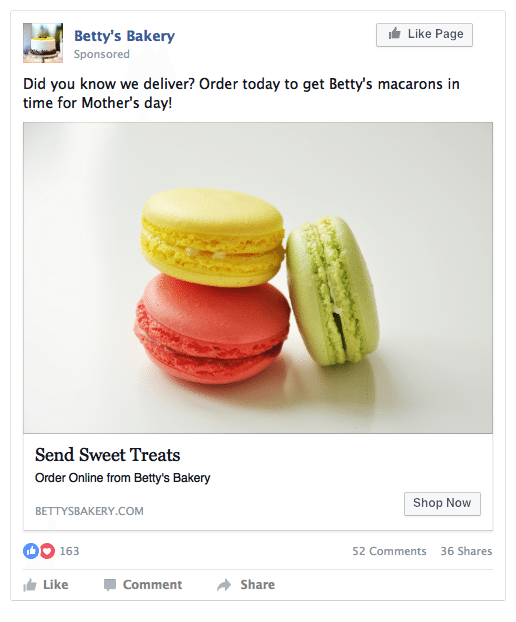
Link Content
When the sole interest of the post is to send traffic elsewhere, like to a sale on the store page, a new blog post, or to site to enter a contest, link posts are generally used. Link posts are best used when the main objective is to direct traffic to an external site. These posts are best measured using the click through rate which will show how many people engaged with the post in the way that was intended. Although, our analysis of Facebook data found that link posts had a 33% lower average engagement rate than photo posts, looking at the engagement rate of link posts can be helpful as these posts are driving active engagement from the audience. On the external site, using the back-end analytics to measure any increase in traffic or sales will be the best measure of whether the link post was successful. As the objective of the link post is to increase traffic and sales, direct measures of the traffic and sales produced from the post are going to be the best indicators of success.
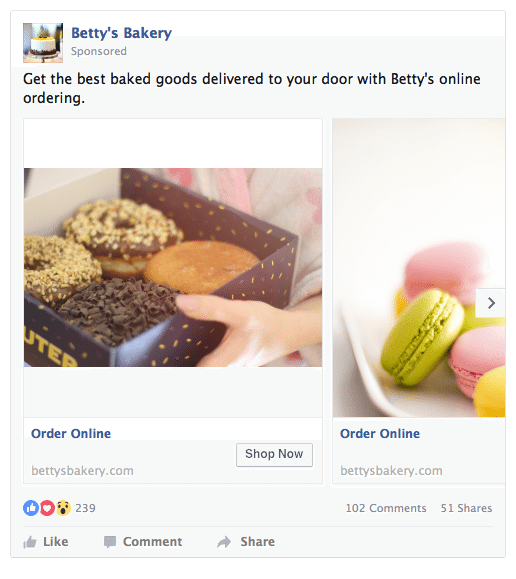
Link Carousel
Link carousel posts are essentially the same as link posts, but they show a variety of items. These posts work well for showing related items like a line of spring dresses or a collection of home-ware items. Successful link carousel posts can be determined through click through rate and the back-end website traffic analytics.
Measurement Overview
Overall, post objective determines what measure to use for assessing post performance. With active engagement as the goal, look at engagement rate. For driving traffic to an external site, look at click through rate and the traffic on the site’s back-end analytics. When raising brand awareness, look at the view rate of videos and post impressions. If the ads are promoted, consider looking at the cost per engagement (CPE), cost per impression (CPM), and cost per click (CPC) depending on which measure fits best with your post objective. Throughout this post, Facebook was used for many of the examples, however, the concept behind what you should measure for each post type translates across social channels. If you are interested in reading more about measuring and bench-marking practices on social media click here for more information.






